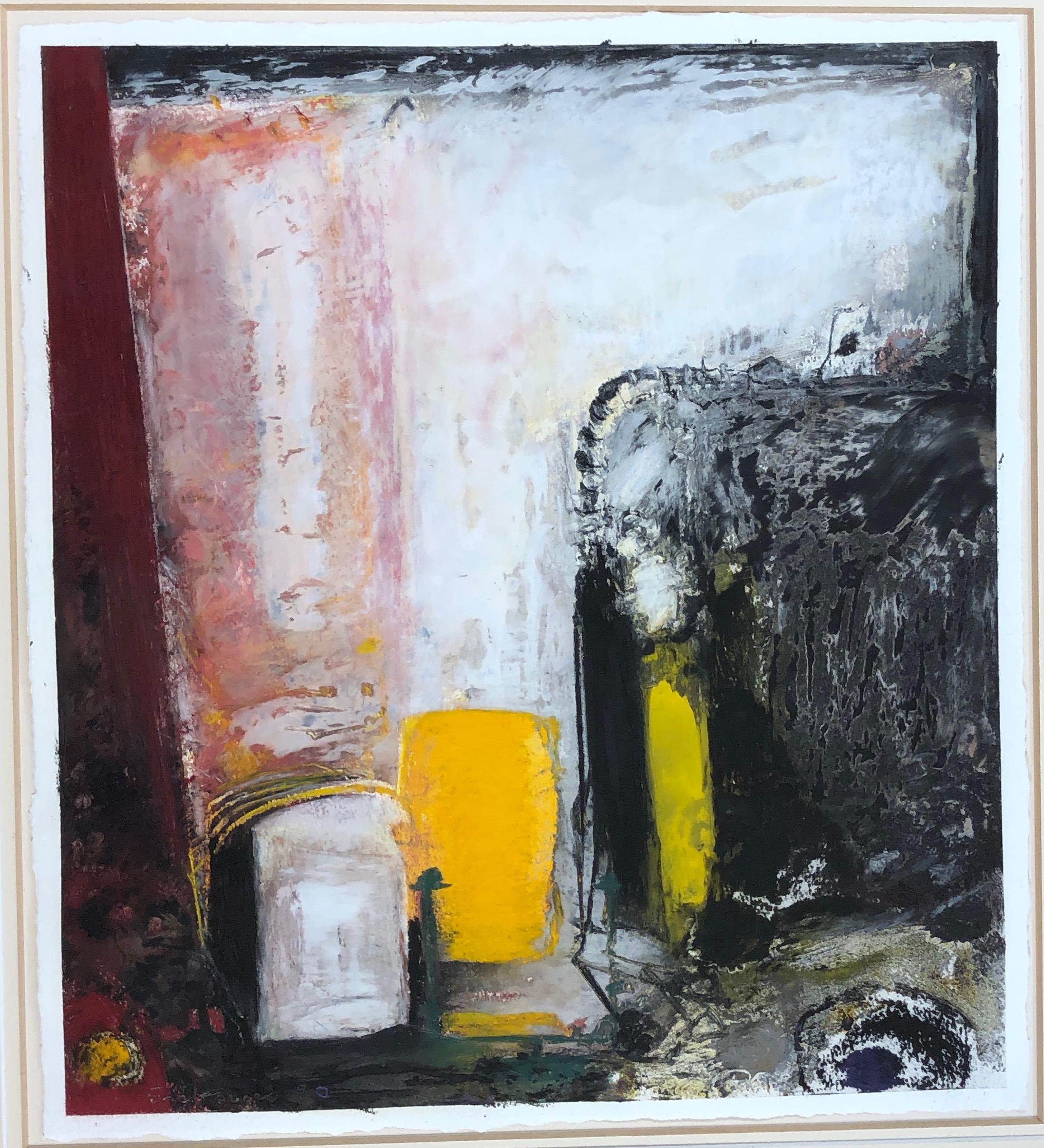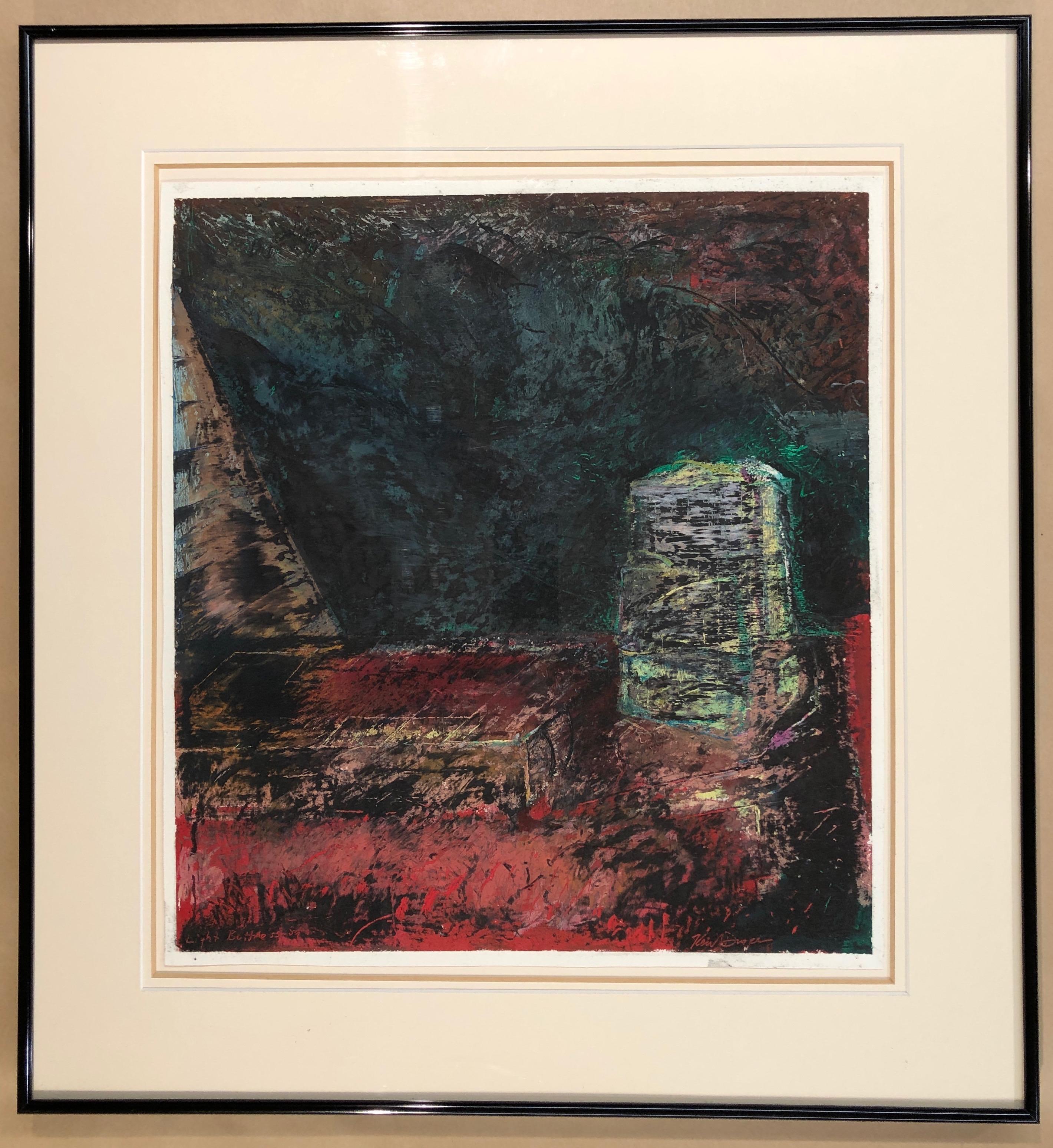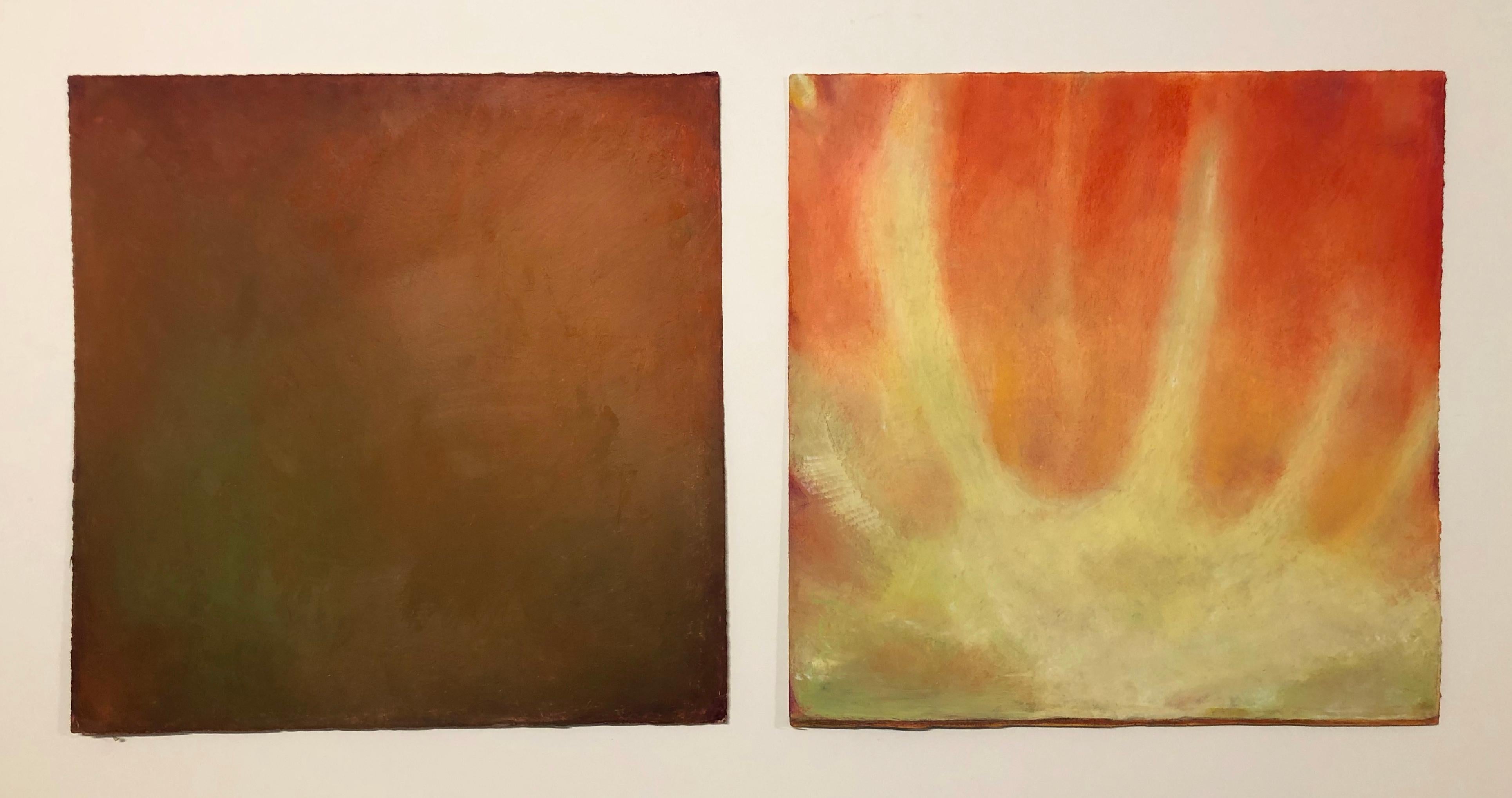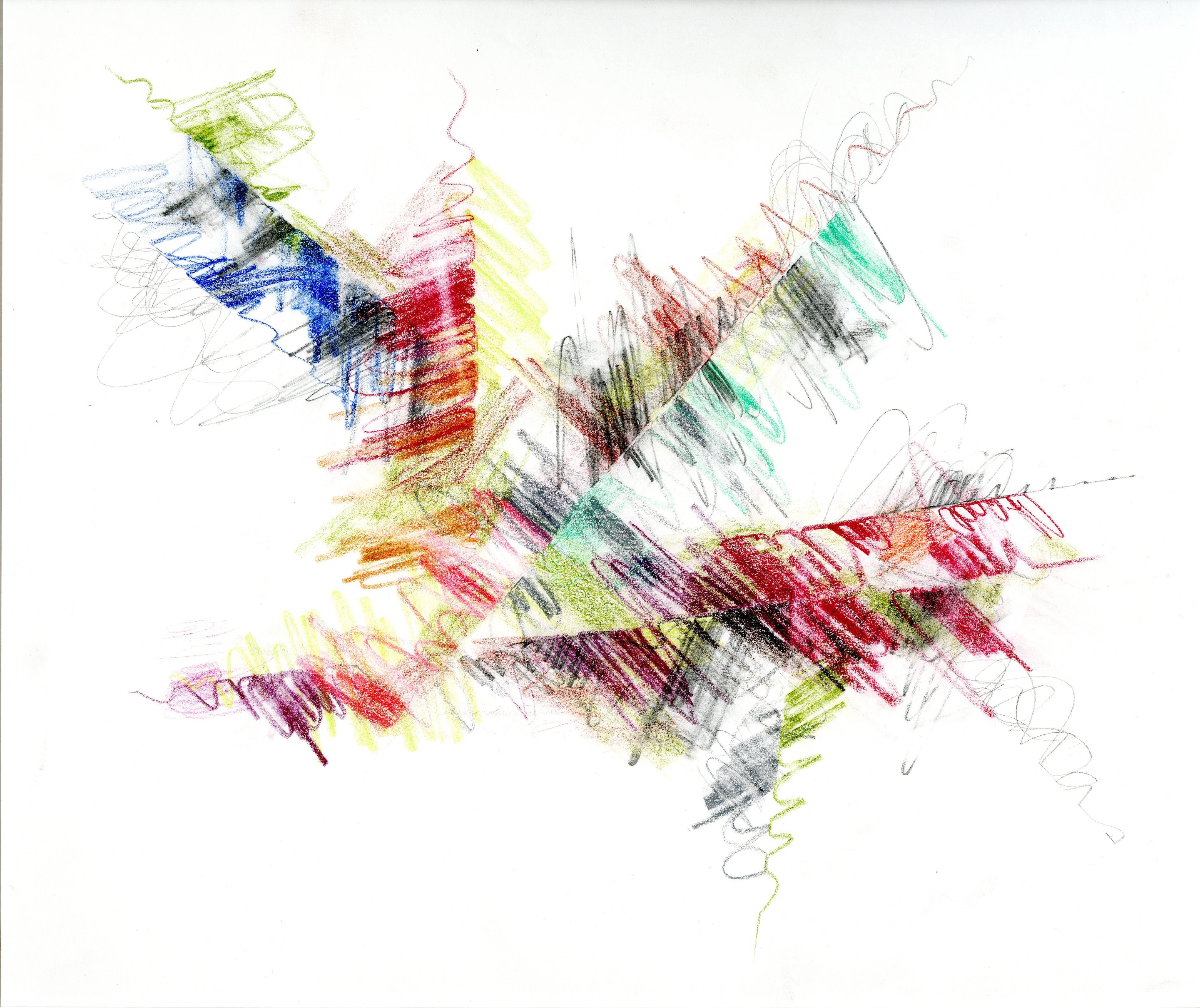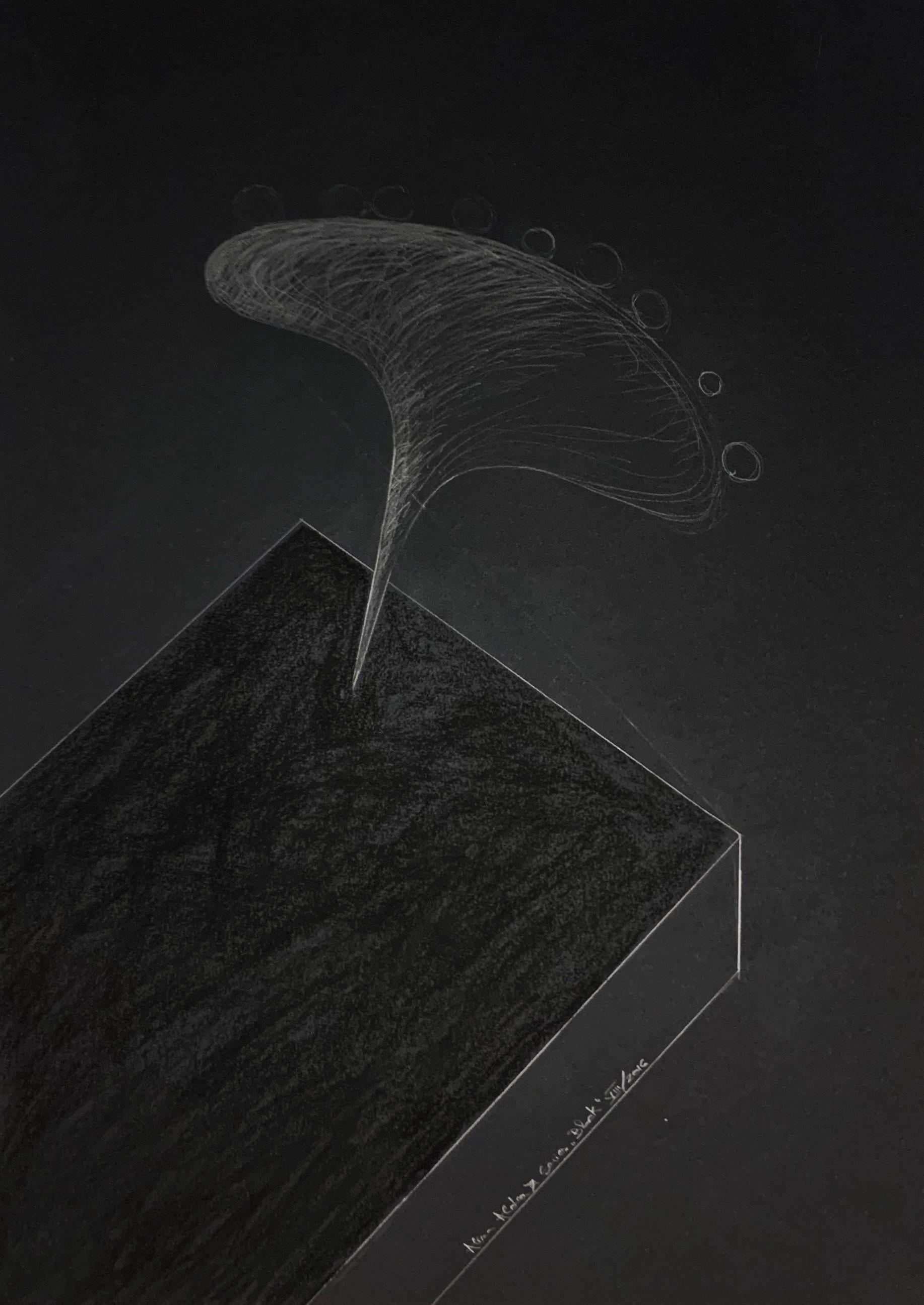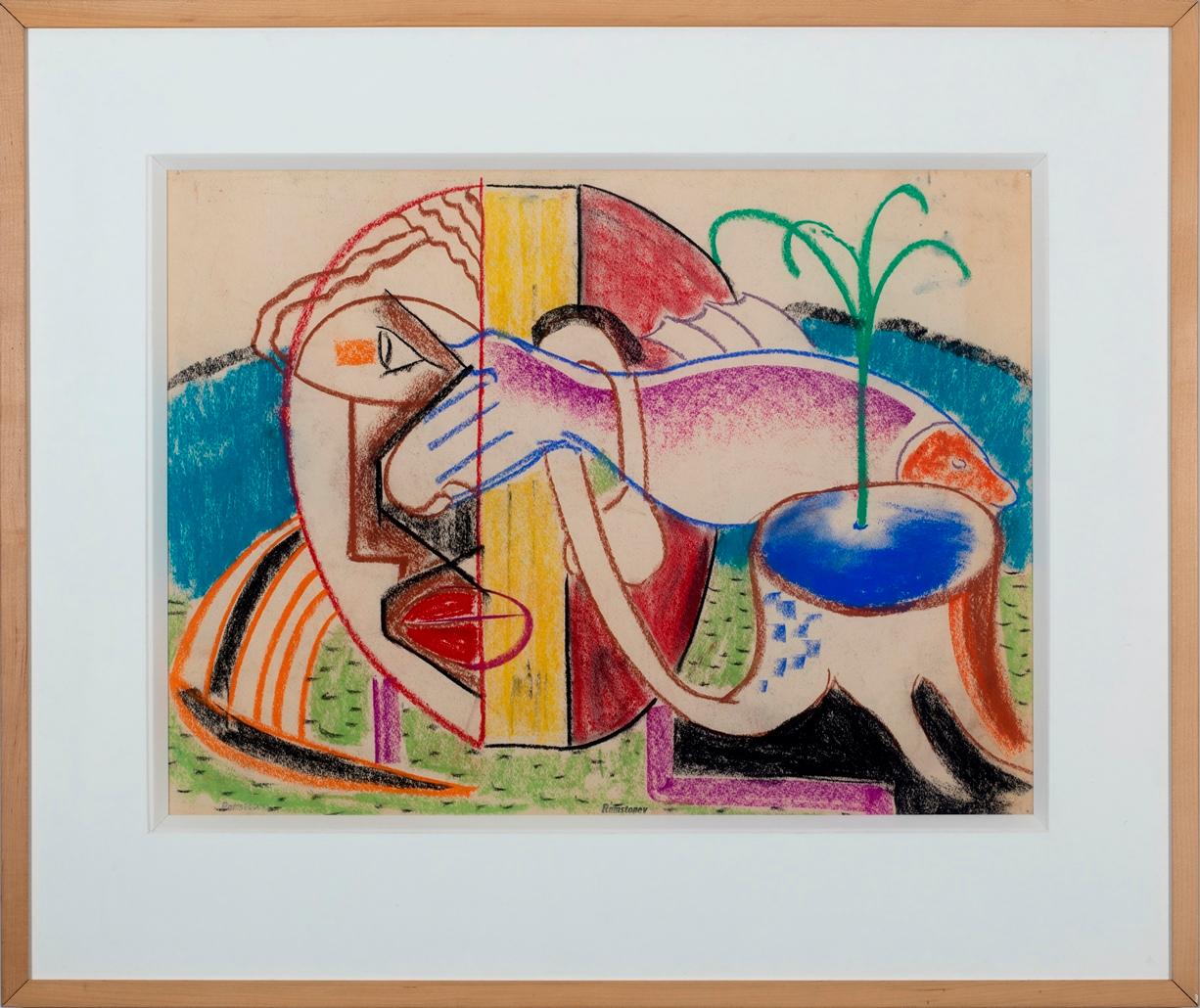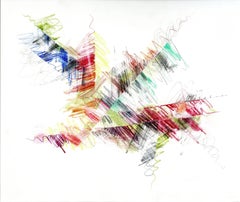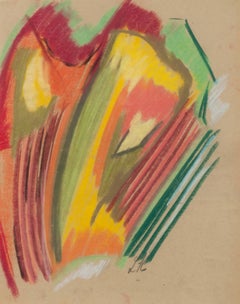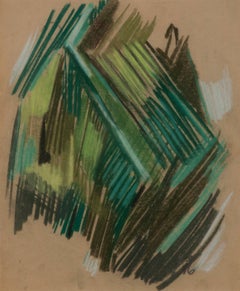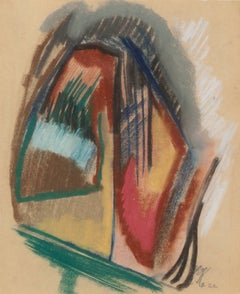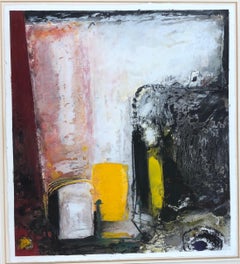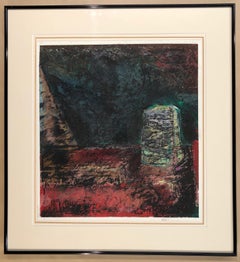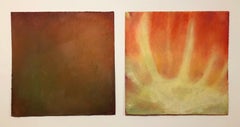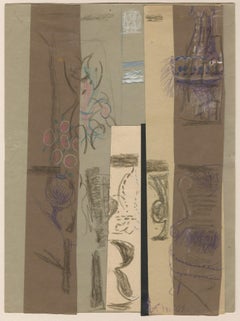
Untitled
View Similar Items
Want more images or videos?
Request additional images or videos from the seller
1 of 6
Fannie HillsmithUntitled1967
1967
About the Item
- Creator:Fannie Hillsmith (1911, American)
- Creation Year:1967
- Dimensions:Height: 12 in (30.48 cm)Width: 9 in (22.86 cm)
- Medium:
- Movement & Style:
- Period:
- Condition:
- Gallery Location:Fairlawn, OH
- Reference Number:Seller: FA108921stDibs: LU14010142672
About the Seller
5.0
Recognized Seller
These prestigious sellers are industry leaders and represent the highest echelon for item quality and design.
Platinum Seller
Premium sellers with a 4.7+ rating and 24-hour response times
Established in 1978
1stDibs seller since 2013
788 sales on 1stDibs
Associations
International Fine Print Dealers Association
Authenticity Guarantee
In the unlikely event there’s an issue with an item’s authenticity, contact us within 1 year for a full refund. DetailsMoney-Back Guarantee
If your item is not as described, is damaged in transit, or does not arrive, contact us within 7 days for a full refund. Details24-Hour Cancellation
You have a 24-hour grace period in which to reconsider your purchase, with no questions asked.Vetted Professional Sellers
Our world-class sellers must adhere to strict standards for service and quality, maintaining the integrity of our listings.Price-Match Guarantee
If you find that a seller listed the same item for a lower price elsewhere, we’ll match it.Trusted Global Delivery
Our best-in-class carrier network provides specialized shipping options worldwide, including custom delivery.More From This Seller
View AllUntitled
By Peter Marks
Located in Fairlawn, OH
Unsigned
Provenance:
Estate of the artist
Peter Marks (1935 -2010)
Peter Marks was born in New York City on January 18, 1935. A lifetime New Yorker, Marks graduated from the Hig...
Category
21st Century and Contemporary Abstract Abstract Drawings and Watercolors
Materials
Crayon
$450 Sale Price
50% Off
Untitled
By Leon Kelly
Located in Fairlawn, OH
Untitled
Pastel on paper, 1922
Signed with the artist's initials in pencil
Provenance: Estate of the artist
Francis M. Nauman (label)
Private collection, NY
A very early abstract/cubist work by Kelly. Created while the artist was studying with Arthur Carles in Philadelphia.
Leon Kelly (October 21, 1901 – June 28, 1982) was an American artist born in Philadelphia, PA. He is most well known for his contributions to American Surrealism, but his work also encompassed styles such as Cubism, Social Realism, and Abstraction. Reclusive by nature, a character trait that became more exaggerated in the 1940s and later, Kelly's work reflects his determination not to be limited by the trends of his time. His large output of paintings is complemented by a prolific number of drawings that span his career of 50 years. Some of the collections where his work is represented are: The Metropolitan Museum in New York, The Whitney Museum of American Art, the Museum of Modern Art, the Philadelphia Museum of Art, and Boston Public Library.
Biography
Kelly was born in 1901 at home at 1533 Newkirk Street, Philadelphia, PA. He was the only child of Elizabeth (née Stevenson) and Pantaleon L. Kelly. The family resided in Philadelphia where Pantaleon and two of his cousins owned Kelly Brothers, a successful tailoring business. The prosperity of the firm enabled his father to purchase a 144-acre farm in Bucks County PA in 1902, which he named "Rural Retreat" It was here that Pantaleon took Leon to spend every weekend away from the pressures of business and from the disappointments in his failing marriage. Idyllic and peaceful memories of the farm stayed with Leon and embued his work with a love of nature that emerged later in the Lunar Series, in Return and Departure, and in the insect imagery of his Surrealist work. "If anything," he once said,"I am a Pantheist and see a spirit in everything, the grass, the rocks, everything."
At thirteen, Leon left school and began private painting lessons with Albert Jean Adolphe, a teacher at the School of Industrial Art (now the University of the Arts) in Philadelphia. He learned technique by copying the works of the old masters and visiting the Philadelphia Zoo, where he would draw animals. Drawings done in 1916 and 1917 of elephants, snakes and antelope, as well as copies of old master paintings by Holbein and Michelangelo, heralded an impressive emerging talent. In 1917, he studied sculpture with Alexander Portnoff but his studies came to an abrupt halt with the start of World War I. Being too young to enlist, he joined the Quartermaster Corp at the Army Depot in Philadelphia, where he served for more than a year loading ships with supplies and, along with other artists, working on drawings for camouflage.
By 1920, the family's fortunes drastically changed. His father's business had failed due to the introduction of ready made clothing and his marriage, unhappy from the beginning, dissolved. Broken by circumstance Pantaleon left Philadelphia to begin a wandering existence looking for work leaving Leon to support his mother and grandmother. He found a job in 1920 at the Freihofer Baking Company where he worked nights for the next four years. Under these circumstances Leon continued to develop his skills in drawing and painting and learned of the revolutionary developments in art that were taking place in Paris.
During the day he was granted permission to study anatomy at the Philadelphia School of Osteopathy where he dissected a cadaver and perfected his knowledge of the human figure. He also met and studied etching with Earl Horter, a well known illustrator, who had amassed a significant collection of modern art which included work by Brancusi, Matisse, and Cubist works by Picasso and Braque. Among the artists around Horter was Arthur Carles, a charismatic and controversial painter who taught at the Pennsylvania Academy of Fine Arts. Leon enrolled in the Academy in 1922, becoming what Carles described as, "his best student".
In the next three years Leon work ranged from academic studies of plaster casts, to pointillism, to landscapes of Fairmount Park in Philadelphia, as well as a series of pastels showing influences from Matisse to Picasso. Clearly influenced by Earl Horter's collection and Arthur Carles he mastered analytical cubism in works such as The Three Pears, 1923 and 1925 experimented with Purism in Moon Behind the Italian House. In 1925 Kelly was awarded a Cresson Scholarship and on June 14 he left for Europe.
Paris
The first trip to Europe lasted for approximately three and a half months and introduced Kelly to a culture and place where he felt he belonged. Though he returned to the Academy in the Fall, he left for Europe again a few months later to begin a four-year stay in Paris. He moved into an apartment at 19 rue Daguerre in Paris and began an existence intellectually rich but in creature comforts, very poor. "I kept a cinderblock over the drain in the kitchen sink to keep the rats out of the apartment" he once explained. He frequented the cafes making acquaintances with Henry Miller, James Joyce and the critic Félix Fénéon as well as others. His days were split between copying old master paintings in the Louvre and pursuing modernist ideas that were swirling through the work of all the artists around him. The Lake, 1926 and Interior of the Studio, 1927, now in the Newark Museum.
Patrons during this time were the police official Leon Zamaran, a collector of Courbets, Lautrecs and others, who began collecting Kelly's work. Another was Alfred Barnes of the Barnes Collection in Philadelphia.
In 1929 Kelly married a young French woman, Henriette D'Erfurth. She appears frequently in paintings and drawings done between 1928 and the early 1930s.
Philadelphia
The stock market crash of 1929 made it impossible to continue living in Paris and Kelly and Henriette returned to Philadelphia in 1930. He rented a studio on Thompson Street and began working and participating in shows in the city's galleries. Work from 1930 to 1940 showed continuing influences and experimentation with the themes and techniques acquired in Paris as well as a brief foray into Social Realism. The Little Gallery of Contemporary Art purchased the Absinthe Drinker...
Category
1920s Abstract Abstract Drawings and Watercolors
Materials
Pastel
$4,000
Untitled
By Leon Kelly
Located in Fairlawn, OH
Untitled
Pastel on paper, 1922
Initialed and dated lower right (see photo)
Exhibited: Francis Nauman, Leon Kelly: Draftsman Extraordinaire, New York, April 4 - May 23, 2014.
Provenance: Estate of the Artist
The Orange Chicken...
Category
1920s Abstract Abstract Drawings and Watercolors
Materials
Pastel
$4,000
Untitled
By Leon Kelly
Located in Fairlawn, OH
Untitled
Pastel on paper, 1922
Initialed lower right (see photo)
Exhibited: Francis Nauman, Leon Kelly: Draftsman Extraordinaire, New York, April 4 - May 23, 2014.
Condition: excellent
Image size: 11 8 7/8 inches
Frame size: 18 1/4 x 16 1/4 inches
Provenance: Estate of the artist
The Orange Chicken...
Category
1920s Abstract Abstract Drawings and Watercolors
Materials
Pastel
$4,000
Chorus Line
By Sam Spanier
Located in Fairlawn, OH
Chorus Line
Oil pastel on paper, c. 1960's
Signed (see photo)
Provenance: Estate of the Artist
Estate of the artist (Estate No. 745)
Condition: Excellent
Image/Sheet size: 5 3/4 x 4 inches
Sam Spanier (1925-2008)
Born in Brooklyn New York, Sam Spanier studied painting with Hans Hofmann (1949–50) and also at the Taos Valley Art School (1951). His formative years as a working artist were spent in Paris (1951–52), where he also became involved with the work of G. I. Gurdjieff, through his disciple, Mme. Jeanne de Salzmann.
By 1953, Spanier’s work had already begun to meet with critical acclaim. That year, he had his first solo gallery show, and was selected by Milton Avery and Hans Hofmann to receive the prestigious Lorian Fund Award. His second solo exhibition, in 1955, was curated by renowned museum director, Gordon Washburn. Spanier’s early work was reviewed by Dore Ashton, Donald Judd, Fairfield Porter, Stuart Preston, and Irving Sandler, among other significant critics of the period.
Spanier’s spiritual path increasingly became the central focus of both his life and his art. In 1960, he was introduced to the teachings of Sri Aurobindo, which led to visits to the Sri Aurobindo Ashram in Pondicherry, India, in 1962 and 1964, during which he was inspired to leave New York City and found Matagiri (in 1968)—a spiritual center in Woodstock, New York—with his lifelong partner, Eric Hughes. The work he embarked upon there bifurcates his life as an artist, separating him from New York’s art world, and radically altering the trajectory of his career. From that point forward, it would be difficult, perhaps impossible, to consider his artistic endeavor apart from the life of dedication he had undertaken, and to which he remained committed.
As early as 1954, Dore Ashton had recognized in Sam Spanier a “haptic visionary;” in 1960, Irving Sandler wrote that the people in Spanier’s paintings “seem to have witnessed some transfiguring event.” In his later paintings—usually worked in oil pastel on panel or paper—made during intermittent creative periods, from the mid-1970s to the final years of his life, the artist’s inner life remains always apparent in his subject matter; and from the portraits and abstract Buddha-like figures and heads, to the fantasy landscapes, the paintings are redolent with a rich intensity of color and light that can only be described as inspired.
Sam Spanier’s works are in the collections of the Historical Society of Woodstock Museum, and the Woodstock Artists Association & Museum. He received the Woodstock Artists Association Lifetime Achievement Award in 2007.
Selected Solo Exhibitions:
Urban Gallery, New York (1954, 1955, 1956); Wittenborn Gallery, New York (1958); Gallery Mayer, New York (1958, 1959, 1960); Unison Gallery, New Paltz (1986, 1995, 2009); Limner Gallery, New York (1988); Fletcher Gallery, Woodstock, New York (1999).
Selected Group Exhibitions:
Salon des Comparaisons, Musée d’Art Moderne, Paris, France (1952); October Exhibition of Oil Paintings, New York City Center Gallery, New York (1954); Salon de Mai, Musée d’Art moderne de la ville de Paris, Centre Culturel de Saint-Germain-en-Laye, Paris, France (1954); Carnegie International, Carnegie Institute, Pittsburgh, Pennsylvania (1955); Les Plus Mauvais Tableaux, Galerie Prismes, Paris (1955);
Première Exposition Internationale de l’Art Plastique Contemporain, Musée des Beaux-Arts de la Ville de Paris (1956); Recent Paintings USA: The Figure, The Museum of Modern Art (1960); Winter’s Work, Woodstock Artists Association, Woodstock, New York (1985); Juried Group Show, Woodstock Artists Association, Woodstock, New York (1986); Woodstock Artists, Self-Portraits, Historical Society of Woodstock Museum, Woodstock, New York (1988); Portraits, Albert Shahinian Fine Art, Poughkeepsie, New York (2003); The World We Live In, Upstate Art, Phoenicia, New York (2003); Show of Heads, Limner Gallery, Phoenicia, New York (2004).
Selected Writings on the Artist:
Dore Ashton, “Sam Spanier,” Art Digest (May 1, 1954) and “Sam Spanier,” The New York Times (March 16, 1960); Cassia Berman, “Sam Spanier: A Divine Calling,” Woodstock Times (February 7, 2008); Lawrence Campbell, “Sam Spanier: Exhibition of Paintings at Urban Gallery,” Art News (April 1, 1954); Sam Feinstein, “Sam Spanier: Exhibition of Paintings at Urban Gallery,” Art Digest (March 1, 1955); Pat Horner, “Big Heart, Timeless Art —Sam Spanier Retrospective at Fletcher Gallery, Woodstock Times (July 1, 1999); Donald Judd, “In the Galleries: Sam Spanier,” Arts Magazine (April 1960); Liam Nelson, “Human Force...
Category
1960s Abstract Drawings and Watercolor Paintings
Materials
Oil Crayon
untitled
By Virginia Dehn
Located in Fairlawn, OH
Unsigned
Authenticated verso by the artist's nephew, Andrew Lowe
Provenance:
Estate of the Artist
Category
Mid-20th Century Abstract Expressionist Abstract Drawings and Watercolors
Materials
Pastel
You May Also Like
"Cranberry Bog" Purple, Red, Black, and Gold Abstract Mixed Media Drawing
Located in Houston, TX
Colorful mixed media piece by Christine Alfery (from Flambeau, Wisconsin) that incorporates hues of purple, red, black, and swatches of gold leaf. Th...
Category
1990s Abstract Mixed Media
Materials
Gold Leaf
Enclosures, contemporary abstract drawing on canvas, red yellow, white, green
By Kenneth Draper
Located in Santa Fe, NM
Enclosures, contemporary abstract drawing on canvas, red yellow, white, green
unique
will be shipped with display frame
Category
1990s Abstract Abstract Drawings and Watercolors
Materials
Oil Pastel
Light Buttress, by Kenneth Draper, pastel, paper, framed, abstract, England
By Kenneth Draper
Located in Santa Fe, NM
frame size 27.5" x 25.5"
Light Buttress, by Kenneth Draper, pastel, paper, framed, abstract, England
Category
21st Century and Contemporary Abstract Expressionist Abstract Drawings a...
Materials
Oil Pastel
The World in a Tomato, abstract oil pastel vegetable still life, 2019
By Daisy Craddock
Located in New York, NY
Daisy Craddock's The World in a Tomato is an abstracted red and green still life of an heirloom tomato, rendered in oil pastel. Drawn from life, Craddo...
Category
2010s Abstract Abstract Drawings and Watercolors
Materials
Paper, Oil Pastel
Black_X - 21st Century, Abstract, Drawing, Black, White, Monochrome
By Alina Aldea
Located in Baden-Baden, DE
Black_X, 2016
pencil, white pastel on black cardboard
27.55 H x 19.68 W in.
70 H x 50 W cm
Alina Aldea's drawings project all the possible forms which appear to rapidly disappear, w...
Category
2010s Abstract Geometric Abstract Drawings and Watercolors
Materials
Pastel, Cardboard, Pencil
Flag Icon unique signed pastel collage on paper by renowned female artist Framed
By Sonia Gechtoff
Located in New York, NY
Sonia Gechtoff
Flag Icon, 1963
Pastel, graphite and collage
Frame included: elegantly framed in hand made wood frame with UV plexiglass
Evocative mixed media mid century modern work...
Category
1960s Abstract Abstract Drawings and Watercolors
Materials
Pastel, Mixed Media, Graphite
Recently Viewed
View AllMore Ways To Browse
1958 Abstract Drawings
Picasso Untitled
Collage Art Abstract Cubist
Peggy Guggenheim
Peggy Brown
Stanley Smith
American Atelier At Home
Picasso Style Table
Gordon And Smith
Gordon Smith
American Cubist Oil Painting 1930s
Intaglio Table
Vintage Gordon Smith
Abstract Jug
Soho Home Table
Sidney Janis
Alicia Brown
William Sidney Mount
